Sustainability!
We don’t see sustainability as a “nice thing to do”, we know it to be absolutely necessary and critical to our operation and our collective livelihoods. It goes without saying then that we take sustainability extremely seriously (with a healthy dose of fun, of course!). So, how do we take this matter seriously? Well, we don’t just talk a nice talk. We take actions that are tangible and impactful. We hope to inspire and excite you to join us on this movement.

STarting in 2022, all SUNRAYS growers will become or will be on their way to becoming Sustainably Grown certified! What does that mean? Let us explain.
What is Sustainably Grown?
Sustainably Grown is among the world’s foremost sustainable agriculture standards. It provides customers with assurance that products meet environmental standards second to none, that farm workers and farm communities are protected and engaged, and that the farm is economically resilient.
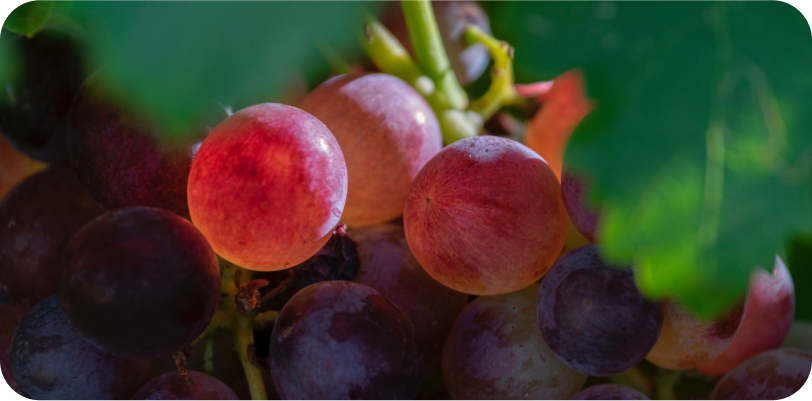
How do growers achieve Sustainably Grown?
Growers undergo a rigorous audit by a globally recognized third party auditing organization to verify that they are meeting the highest levels of performance under the three internally recognized pillars of sustainability: environmental stewardship, social responsibility and economic stability.

Why Sustainably Grown?
While we like to believe you will trust us when we say we do things the right, sustainable way, we get it that it’s hard to just take our word for it. With Sustainably Grown, our claims are audited, verified and certified by a third party against one of the world’s most respected sustainability standards. You can shop with confidence knowing that SUNRAYS fruits have successfully exhibited healthy, safe and fair working conditions, protection of soil and water resources, responsible agrochemical use, energy efficiency, climate impact reduction, ecosystem protection, product quality, and community engagement.
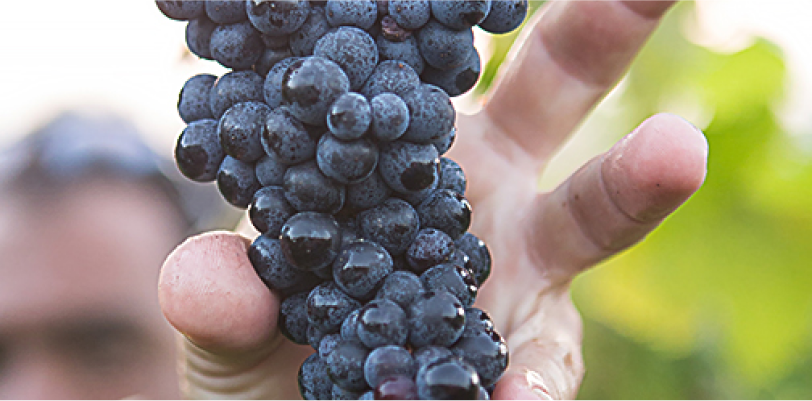
Recycling is so yesterday. Let’s get excited 🤖 about composting! You may have seen or even purchased some of our home compostable packaging 
 but may be wondering «what on earth 🌍 is composting and why should I care»? Well, let’s get you some answers!
but may be wondering «what on earth 🌍 is composting and why should I care»? Well, let’s get you some answers!

What is composting?
Composting is one of the world’s most natural recycling systems. It describes a process where living microorganisms break down organic matter (fruit, vegetables, branches, leaves, compostable packaging, etc.) into compost, or rich nutrient dirt.
Why is composting important?
Composting is nature’s way to recycle its organic waste. Take an orange peel: once it’s no longer needed to protect the fruit, it will return back to the earth, where it will fully biodegrade and turn into dirt. For comparison, if an orange peel ends up in a landfill with anaerobic conditions, it won’t biodegrade in a timely manner and will instead release methane: a greenhouse gas with a 100-year global warming potential 28-34 times that of CO2.
The potential of composting has been long appreciated by environmentalists worldwide. Composting is easy, cheap, and truly circular since it effectively turns waste into a resource. Nutrient-rich compost can be used to fertilize and regenerate eroded and degraded soils. Furthermore, composting returns carbon to the soil by sequestering it.
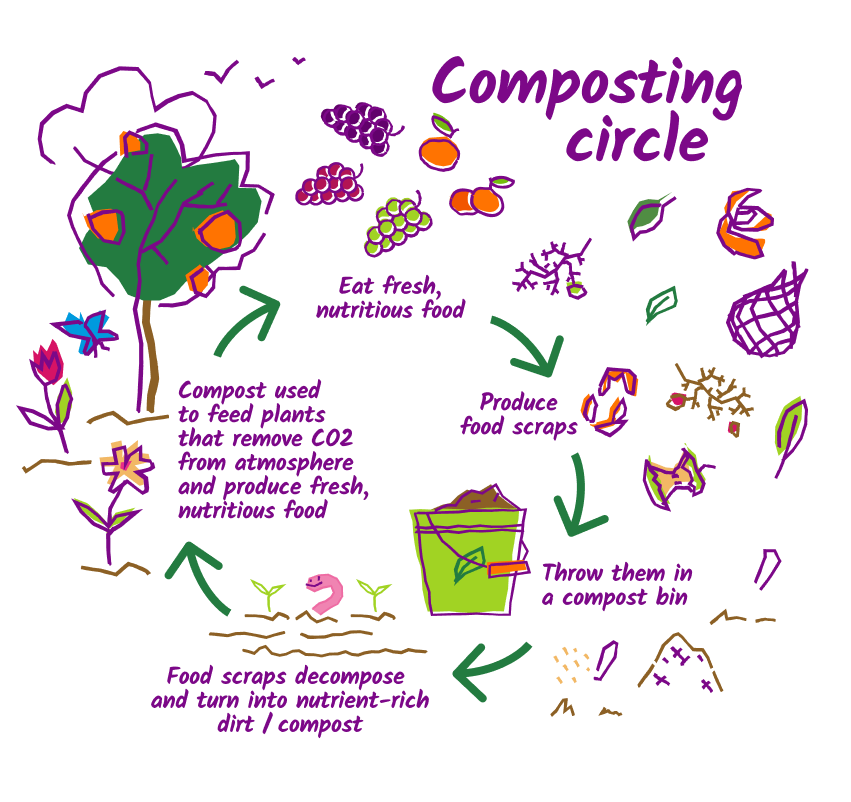
How do I compost?
There are actually many different ways to compost! There’s hot composting, cold composting, vermicomposting, anaerobic composting, home composting as well as industrial composting. To find your own industrial compost facility, please go to www.findacomposter.com. If there is no community compost or industrial composting facility in your area, it is relatively easy to start your own home compost — even if you live in an apartment (check out the Lomi home composter by Pela here)!
If you have a backyard, choose a location for your compost bin. A dry, shady spot is the best.
If you live in an apartment, you have choices. If you’re sensitive to odors and not a big fan of worms, you can use a home composter device like the Lomi. Otherwise, you can create your own compost bin! To create your own compost bin you’ll need a well-insulated container with two lids. Poke holes in the bottom for airflow, then cover with the second lid to prevent leakage. You’ll need to introduce some worms, the most common bio-organism used in apartment compost are red wiggler worms.
What goes in your compost?
A great compost has a balanced ratio of “browns” (carbon) and “greens” (nitrogen) in order to break down properly. Many people find the best ratio is 1 part “green” to 2 parts “brown.” This means, if every layer is about the same height, you’ll want a 2:1 ratio of browns to greens. To start your compost bin, first, place 2 layers of browns, then a layer of greens, then another 2 layers of browns, and on and on, until your compost is full. When it’s filled to the top, cover it and keep it covered so it stays warm, fluffing it to let air get through every few weeks. In order to speed up the disintegration process, you can cut up or rip up your browns and greens, making it easier and faster for micro-organisms to digest. Keep your compost balanced, wet as a wrung-out sponge, aerated, and covered. If it gets dry, add water.
How does composting work?
Under the right conditions of heat, humidity and oxygen, your organic waste will start to break down into small particles, that will be digested by bacteria and another microorganism. As a result of this microbial activity, the compost pile will turn into water, CO2, and nutrient-rich biomass that can significantly improve soil health by helping it retain water and nutrients. In-home compost, the process is less controlled and slower, typically taking between 4 weeks to 12 months. Industrial composting facilities usually provide a more controlled environment and higher temperatures, ensuring full biodegradation of organic waste in under 6 months.
?

Just message us at contact@sunraysfruits.com
and we’ll be happy to assist you wherever we can on your composting journey.
Now that you’re excited about composting, you’ll be even more excited 🤖 to learn about our expanding lineup of home compostable packaging! We work with the SMARTEST and MOST INNOVATIVE minds in sustainable packaging solutions around the world 🤖 to transition all our packaging to be earth digestible!
SUNRAYS® Home Compostable:
Grape bags by TIPA ®
Designed as an alternative to our traditional plastic bags  ,these bags
,these bags  are fully home compostable and will turn into nutrient rich dirt. They are made from 20% bio-based plastic (derived from corn 🌽starch and sugar cane) and 80% fossil-based plastic, designed to fully disintegrate in three to six months.
are fully home compostable and will turn into nutrient rich dirt. They are made from 20% bio-based plastic (derived from corn 🌽starch and sugar cane) and 80% fossil-based plastic, designed to fully disintegrate in three to six months.
Who is TIPA®?
Inspired by nature, TIPA® provides fully compostable packaging that is designed to break down within months under compost conditions, just like any organic matter. TIPA® packaging offers solutions for conventional plastic alternatives in the food and fashion industries and is built to fit existing machinery and supply chains.
What is the TIPA® bag made from?
Produced in the United States, our TIPA® bag is made from 20% bio-based plastic — derived from corn starch and sugar cane — and 80% fossil-based plastic. We’re currently working together with TIPA® to improve the bio-based contents of these compostable bags.
How do I dispose of the TIPA® bag?
Our bags from TIPA are fully compostable and complies with European standards (US equivalent standard for OK compost HOME does not yet exist) for home composting, visible via the TUV OK compost HOME logo. With an active and healthy compost heap, the TIPA® bag will disintegrate within six months.
No compost heap? No problem! To start your compost journey, all you need is a compost bin — you can make your own or buy a ready-made unit — a mixture of green fresh waste and brown leafy, earthy materials, a little water, air and some patience. Alternatively, check with your local waste authorities whether they accept bioplastics in their organic waste streams or find a community composting project.
Our TIPA bag is also Lomi Approved meaning you can safely compost this bag in your Lomi device. Don’t have a Lomi? Learn more here!
Please know you can’t put your TIPA® bag in plastic recycling — a final option would be to dispose of it with regular waste.
Compost in four steps:


STEP 1:
Make your TIPA® bag ready to compost (cut up for easier composting)


STEP 2:
Add it to your home composting, OR community composting if they accept TIPA® bags


STEP 3:
Keep feeding and tending to your compost as usual


STEP 4:
Use your freshly made compost in your garden, or donate it to a community garden

Mandarin nettings by VPZ ®
Designed as an alternative to our traditional plastic mesh netting bags  , these bags
, these bags  are fully home compostable and will turn into nutrient rich dirt. They are made from 100% beechwood, which is recovered from the thinning of FSC®– or PEFC-certified forests, designed to fully disintegrate in eight to twelve weeks.
are fully home compostable and will turn into nutrient rich dirt. They are made from 100% beechwood, which is recovered from the thinning of FSC®– or PEFC-certified forests, designed to fully disintegrate in eight to twelve weeks.
Who is VPZ®?
V{Z was founded as a company that sells food packaging in Graz, Austria. From the outset, VPZ have made it their mission to play an active role in shaping our future. They channel their creativity into new packaging concepts that contribute towards a better environment.
What is the VPZ® netting made from?
Produced in Austria, our VPZ netting is made from 100% beechwood, which is recovered from the thinning of FSC®– or PEFC-certified forests in central Europe (one-third from Austria and two-thirds from neighbouring countries). Beechwood forests are naturally occurring primary forests and are able to regenerate themselves, without the need for reforesting. We’re currently working together with VPZ to develop a home compostable tag that attaches to the netting.
How do I dispose of the VPZ® netting?
Our netting from VPZ is fully compostable and complies with European standards (US equivalent standard for OK compost HOME does not yet exist) for home composting, visible via the TUV OK compost HOME logo. With an active and healthy compost heap, the VPZ netting will disintegrate within eight to twelve weeks.
No compost heap? No problem! To start your compost journey, all you need is a compost bin — you can make your own or buy a ready-made unit — a mixture of green fresh waste and brown leafy, earthy materials, a little water, air and some patience. Alternatively, check with your local waste authorities whether they accept bioplastics in their organic waste streams or find a community composting project. Our VPZ netting is also Lomi Approved meaning you can safely compost this netting in your Lomi device. Don’t have a Lomi? Learn more here!
Please know you can’t put your VPZ netting in plastic recycling — a final option would be to dispose of it with regular waste.
Compost in four steps:


STEP 1:
Make your VPZ netting ready to compost (remove the metal clip and tag, then cut up for easier composting)


STEP 2:
Add it to your home composting, OR community composting if they accept VPZ netting


STEP 3:
Keep feeding and tending to your compost as usual


STEP 4:
Use your freshly made compost in your garden, or donate it to a community garden



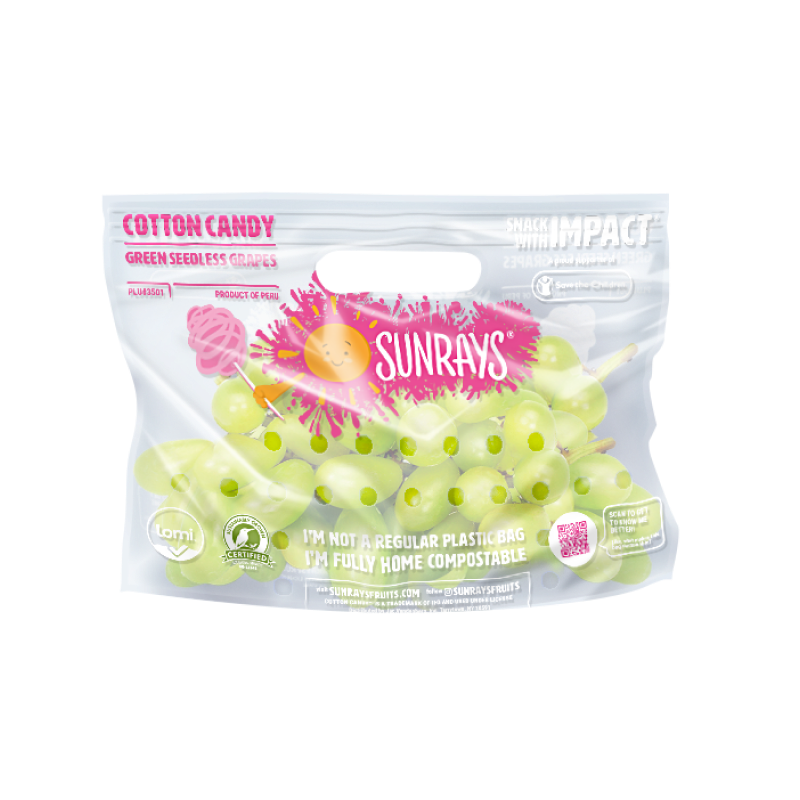
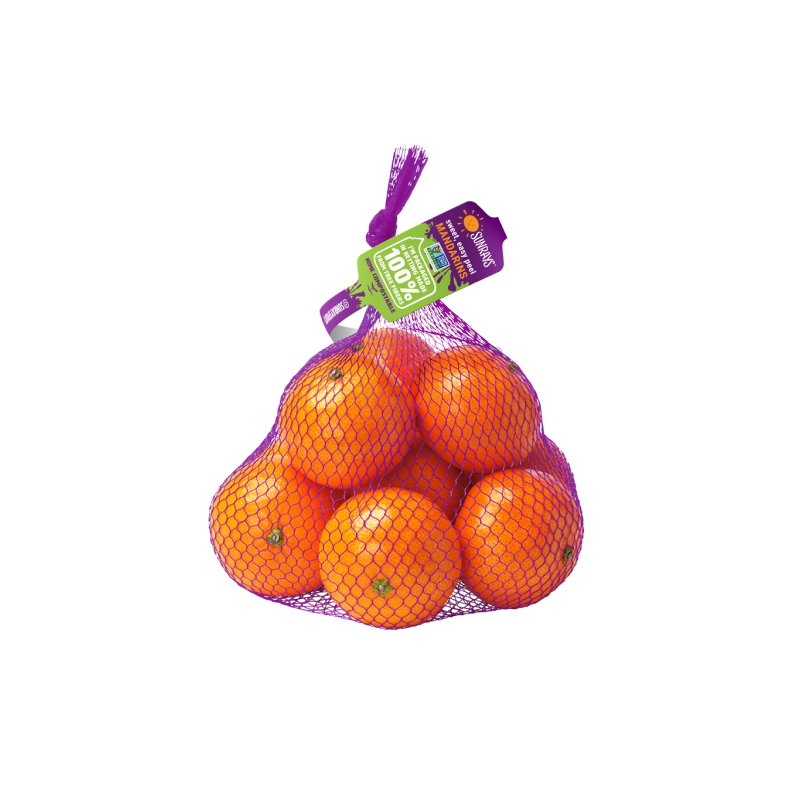 but may be wondering «what on earth 🌍 is composting and why should I care»? Well, let’s get you some answers!
but may be wondering «what on earth 🌍 is composting and why should I care»? Well, let’s get you some answers!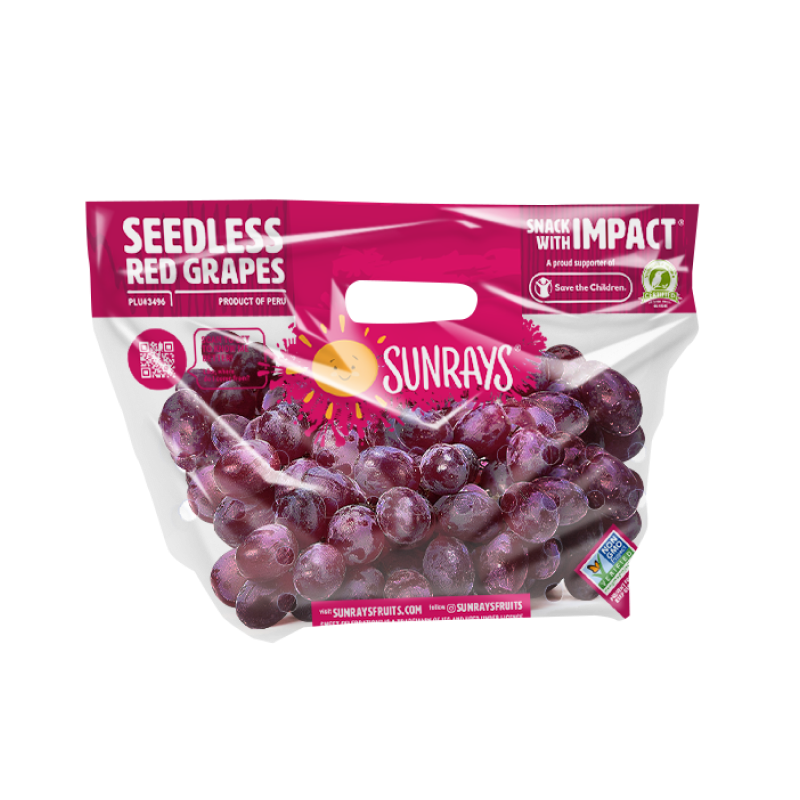 ,these bags
,these bags 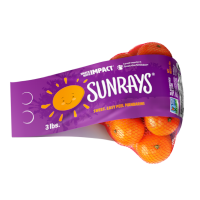 , these bags
, these bags 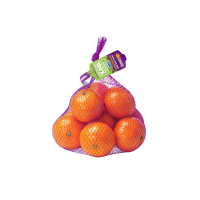 are fully home compostable and will turn into nutrient rich dirt. They are made from 100% beechwood, which is recovered from the thinning of FSC®– or PEFC-certified forests, designed to fully disintegrate in eight to twelve weeks.
are fully home compostable and will turn into nutrient rich dirt. They are made from 100% beechwood, which is recovered from the thinning of FSC®– or PEFC-certified forests, designed to fully disintegrate in eight to twelve weeks.